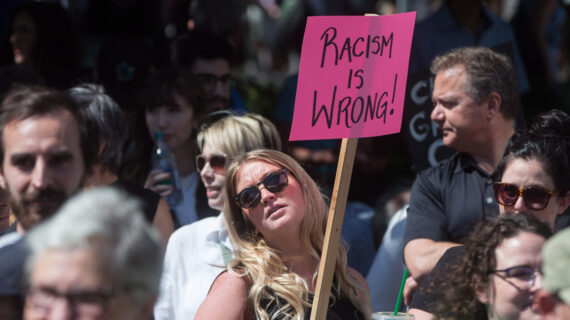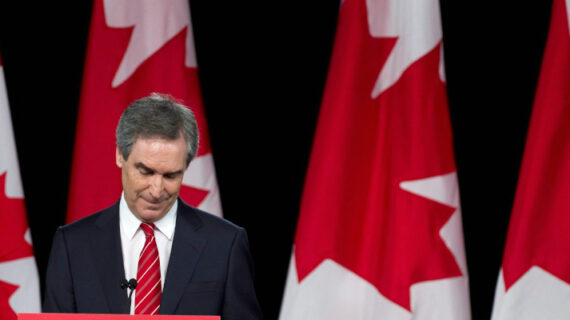Finance Minister Chrystia Freeland unveiled a federal budget on Tuesday that she said would help Canadians struggling with higher prices without fueling the inflation that has been squeezing family budgets.
Immediately after the budget was unveiled, NDP leader Jagmeet Singh said his party would support the fiscal plan in the House of Commons and continue to prop up the Liberal government. Conservative leader Pierre Poilievre called it a “full frontal attack on the paycheques of hard-working Canadians” and reiterated that his party would be voting against it.
We’ve collected insights from some of our smartest contributors this morning to give you a sense of what was (and wasn’t) in yesterday’s budget.
No one should be surprised by this spendthrift budget
By Sean Speer
The Trudeau government is what it is. After more than seven years in office, its basic political DNA isn’t going to change and so we shouldn’t expect its approach to economic and fiscal policy to change either.
It came to power in 2015 with a strong focus on equity and redistribution and greater disposition to the use of government spending to advance economic and social priorities than its predecessors dating back to the prime minister’s own father in the 1970s.
This progressive persuasion found its expression in the government’s first handful of years when program spending grew by an average of 6.4 percent per year. Some of this incremental spending was good and useful. The Canada Child Benefit, for instance, is a major policy accomplishment.
But a lot of it seemed reflexive and ill-thought-out. It reflected an inherent faith in the positive effects of public spending and the ideological conviction that the biggest challenges facing the country were ones of income inequality, systemic discrimination, and historical injustices. Economic growth was an afterthought that was simply taken for granted.
The COVID-19 pandemic reinforced these instincts. It was a crisis that called for a massive increase in government spending and a role for a more activist state. The 2020-21 fiscal deficit of $312.4 billion fully exceeded total revenues in the previous years. As my former boss, Prime Minister Stephen Harper, put it in a speech last week, he could have cut every tax to zero and still run a smaller deficit.
In the post-pandemic era, however, the Trudeau government promised something of a different path. It spoke of the need to prioritize economic growth and exercise fiscal restraint. The Fall Economic Statement from November 2022 even projected its first fiscal surplus since coming to office.
Yesterday’s federal budget is a reminder though that governments don’t suddenly change after more than a half-decade in power. Notwithstanding the pre-budget positioning of fiscal restraint, program spending is set to increase by an average of $7.8 billion per year over the next five years relative to November’s update. That amounts to nearly $40 billion in new, incremental spending in just 145 days.
The result is that this year’s projected deficit has gone from $30.6 billion in the Fall Economic Statement to $40.1 billion in the budget. The same broadly goes for the subsequent years including 2027-28 which now anticipates a $14 billion deficit rather than a $4 billion surplus.
This tendency for spending projections to be revised upwards and the deficit to worsen is the fiscal modus operandi of this government. At this point, those who blame it for being surprised by another spendthrift budget should probably look in the mirror.
Another consequence of the government’s long track record is that it’s now at a point when it start to reverse its own past policies. During the Trudeau government’s time in power, Ottawa’s spending on outside consultants has increased by 95 percent. The budget promises to reduce this spending by 15 percent over the next four years.
It’s not usually a good sign for a government when it heralds the reversal of its own mistakes as a major policy success. For what it’s worth, I started to feel that way in 2015. And we know how that ultimately went.
A suffocating number of subsidies
By Howard Anglin
Even by the standards of the late Roman empire, the emperor Heliogabalus was a man of flamboyant appetites. I will leave it to the reader to look up the more lubricious accounts of his reign, but among his supposed extravagances was a banquet at which he concealed several tons of flower petals in the ceiling. At his signal, the perfumed cache descended on his guests, literally suffocating them in efflorescent splendour.1The legend is vividly illustrated by that great Victorian painter of louche classicism, Sir Lawrence Alma-Tadema in his painting The Roses of Heliogabalus.
Decadence. It’s a word that comes to mind when I read about the latest Liberal budget. But instead of perfumed petals, Canadians are being showered with subsidies. Or, rather, foreign investors in Canadian companies are. Eighty billion dollars’ worth of green subsidies alone over the next decade. Us normal Canadians just get stuck with the bill.
We are told that this spending is necessary to keep up with the Joneses, er, the Bidens, next door in the zero-sum game of attracting global capital. The alternative would be to make it easier to develop the resources we already have, which would help defray the cost of subsidies to foreign billionaires, but that would violate this government’s overriding commitment to feeling good about itself, whatever the cost to us.
All decadence shares a common source: an out-of-touch elite ceases to be able to distinguish reality and unreality, or in this case profit from subsidy. They come to believe that their pet agendas are national imperatives and they feel justified in indulging their whims at the expense of mere citizens. In last November’s fall update, Chrystia Freeland proudly announced that the government would return to a balanced budget by 2027, with a surplus of $4.5 billion. Now, just four months later, that surplus has turned into a $14 billion deficit.
That’s a lot of rose petals.
A lot to be desired for Canada’s newcomers
By Amal Attar-Guzman
Canada’s population is rapidly growing, according to Statistics Canada, with more than a million newcomers arriving in the country last year. As such, issues surrounding immigration and refugees are necessarily an important component of the 2023 federal budget.
In her budget speech, Finance Minister Chrystia Freeland said that immigration is not only a social policy but an economic one. To help the process, starting in 2023-24, the budget provides $10 million over five years for the IRCC and RCMP to implement biometrics to expedite the citizenship application process. That way, the immigration system will not only attract applicants but actually be able to process their applications in a fair, fast and secure way.
Regarding refugees and asylum seekers, $43.5 million in 2023-24 will be provided to the Department of Justice to maintain federal support for their legal aid services, something that is very much needed in these communities.
But one aspect the 2023 federal budget does miss is the crucial intersection between immigrants and refugees and the lack of affordable housing and the rising cost of living. This is a reality that all refugees, including those coming from Ukraine, are facing.
Freeland rightly heralded Ukraine’s bravery and resistance. The 2023 federal budget also further commits the government’s continued extension of the temporary Canada-Ukraine authorization for emergency travel, along with its additional funding of $171.4 million over three years starting in 2022-23.
However, once they arrive, Ukrainian refugees have been struggling to find housing after their short-term emergency accommodation is up. They risk going to the streets with minimal financial support. As a result, some have been contemplating going back to Ukraine, despite the danger.
While some financial investments for immigration and refugees are laudable, there is still much left to be desired.
On housing? Well, maybe next year…
By Steve Lafleur
Canada is in the grips of a housing crisis. While Toronto is the epicenter, the effects have cascaded as people move further out into the GTA and the rest of the country in search of more affordable housing. Given that backdrop, you might have expected something big to come out of this budget season on housing.
And yet, the Toronto, Ontario, and now federal budgets have come and gone without a serious attempt to grapple with our housing shortages. There is tinkering at the margins here and there, but no one is acting as though we need to double housing starts (which we do).

The city and province have made some real progress on housing policy, but it’s not enough. We need more housing of all types as soon as possible. That can’t happen so long as municipalities can veto housing near public transit. It won’t happen if we let approval processes drag out forever. And it certainly isn’t going to happen if we’re going to let homeowners veto every single inconvenience.
We’re not going to solve our housing crisis until someone treats it like a crisis. Maybe next year, I guess.
Going everywhere and nowhere all at once
By Livio Di Matteo
The 2023 federal budget is designed to balance the federal government’s spending agenda against its ability to stay in power or, if necessary, fight a snap election.
It provides targeted measures of affordability relief, increases spending on health including a dental plan, and provides clean industry tax incentives to build the green economy and counter the U.S. Inflation Reduction Act. At the same time, it seeks to placate those who argue that the government is still spending too much by marketing spending restraint via measures such as reducing the outsourcing of consulting services.
However, in the end spending and the deficit are up substantially given page after page of assorted announcements ranging from money to protect whales, more generous student grants and loans, to cleaner and healthier ports. Much of it is an attempt at clever marketing as calling something a “grocery rebate” obviously sells better than a “GST rebate extension for lower incomes”, especially given the GST does not apply to basic groceries anyway. All of this is occurring at a time of greater economic uncertainty given the current financial crisis, rising interest rates, and the prospect of a “shallow” recession.
In some respects, the federal government is a deer caught in the headlights. Once again, the world has dramatically changed. After the disruption of the pandemic, the revenue boom of the post-pandemic period has reduced the deficit, but the inflationary revenue growth surge is coming to an end and there is the spectre of a global recession. At $480 billion, expenditure in 2022-23 is down from 2021-22 but is forecast up every year reaching $556 billion by 2027-28. Notwithstanding these spending increases, any revenue decline from a recession will end what little progress has been made on the deficit. Indeed, the period 2021-22 to 2027-28 will see over $260 billion in accumulated deficits and bring the net debt to $1.4 trillion.
Economic growth has slowed while population growth is accelerating, so real capita GDP can be expected decline in the short to medium term. Historical experience from past immigration surges often had robust population growth occurring in tandem with soaring construction projects and rising investment-to-GDP ratios, but that is not occurring at present. Even the Clean Technology Investment Tax Credit designed to spur investment in clean technology or critical mineral extraction is targeted only at the green sector rather than part of a comprehensive strategy to boost long-term economic productivity and growth. And tying the Green Electricity Investment Tax Credit under this program to the level of wages being paid rather than output or outcomes suggests a new era of industrial distortions with long-term efficiency impacts.
In the end, the Canadian economy needs a ramping up of both physical and social investment to accommodate a larger population which increased by one million in 2022 alone. Then there is a need for business investment in new technologies and infrastructure to both boost productivity as well as deal with climate change and the greening of the economy. Moreover, budget 2023 reaffirms a commitment to a global minimum tax regime on multinational corporations including digital corporations. Finally, there is a need for investment in national defense and security to deal with a more dangerous geopolitical world. At a proposed $38.6 billion over 20 years—barely $2 billion annually—to invest in the defence of North America and modernize NORAD, we won’t be getting our defence budget to two percent of GDP anytime soon. And to deal with affordability, lowering the income tax rate on the first $53,000 in taxable income would make life more affordable for lower incomes and might also boost labour supply response and productivity. Instead, EI premiums are going up.
So, the budget seems to be a scattershot flurry of budget initiatives and measures so voluminous that their release overflowed into the days before the actual budget. In the end, the federal government is going both everywhere and nowhere all at once.




